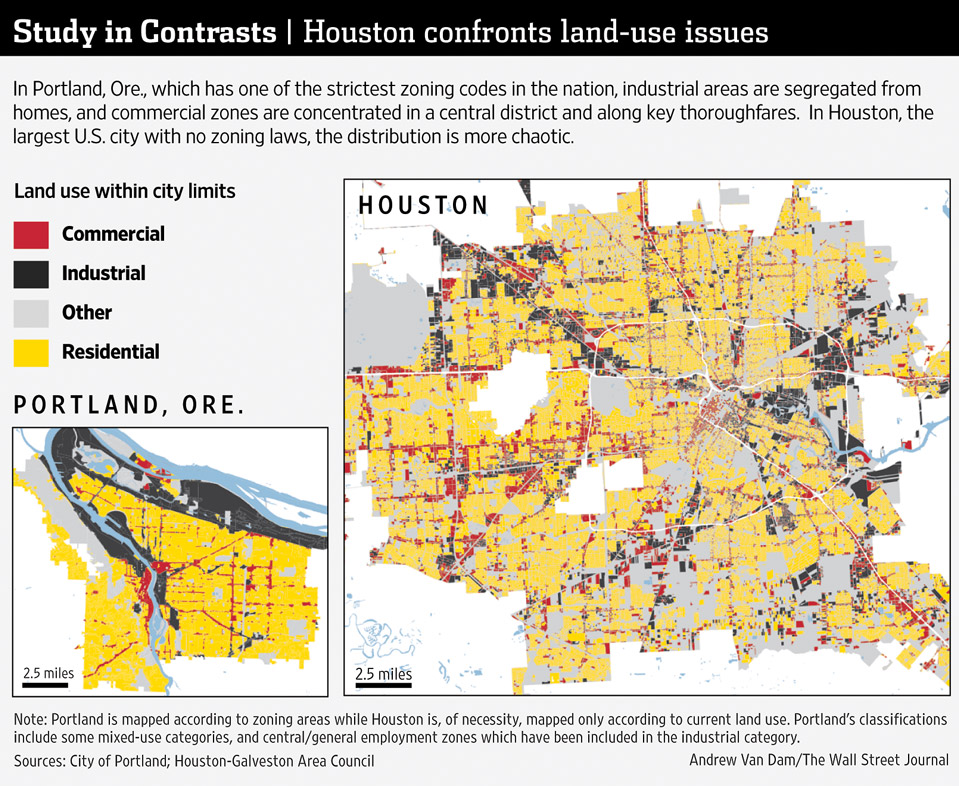The WSJ ran a feature on the ongoing zoning/nuisance dispute in Houston over the construction of the Ashby High Rise.
The decision comes as Houston is beginning to grow vertically to accommodate its rapidly expanding population, spurring protests by homeowners who complain that tall buildings are sprouting up next to single-family homes.
Some developers fear the ruling will encourage more lawsuits from disgruntled neighbors, and limit the types of projects builders will be able to erect in the future.
“It adds an element of NIMBY [Not in My Backyard] blackmail to the development process that is totally foreign to Houston,” said Mike Wyatt, managing director of Core Real Estate, which develops commercial buildings.
Supporters of more deliberate city planning also were dissatisfied with the outcome, saying the judge squandered an opportunity to rein in what they see as haphazard development. He should have ordered the high-rise to be scaled down, or not built at all, they contend.
“A lot of people are feeling the chaos,” said Peter Brown, who lives near the site of the Ashby project and is a fellow at Houston Tomorrow, a nonprofit that advocates for walkable neighborhoods. Mr. Brown, who helped finance the lawsuit, said it takes him about 10 minutes to exit from his cul-de-sac because of heavy traffic—and that is without the high-rise.
Like other urban areas in Texas,Houston is struggling to accommodate an influx of newcomers attracted by its strong economy. The number of residents in the Houston metro area grew by 138,000 to more than 6.3 million between 2012 and 2013, the largest numerical increase in the nation, according to U.S. Census data. Another one million are expected to arrive in the next decade.
As denser dwellings are built to house them, the number of challenges also is growing. Already, a group from another Houston neighborhood has sued the developers of an office tower, encouraged by the Ashby case.
Filed last year, the Ashby suit is part of a seven-year campaign against the project. The campaign’s symbol, a fanged cartoon skyscraper threatening to eat surrounding houses, is visible on signs staked into dozens of lawns in the well-to-do Boulevard Oaks and Southampton Place neighborhoods shaded by towering oaks.
The WSJ also ran comments from the developers, who were shocked at the $1.2 million damage award, and the Mayor, who does not favor zoning in Houston:
The jury’s verdict surprised Houston’s developers, who noted that the building had garnered all required city permits. The project’s developers welcomed the judge’s decision on the building’s construction, but said they plan to appeal the $1.2 million damage award. “You can’t be damaged by something that doesn’t exist,” said Kevin Kirton, one of the developers.
The lawyer for the homeowners didn’t respond to requests for comment.
City officials, who had argued against preventing the building’s construction in a letter to the judge, declined to comment on the damages. As Houston’s skyline grows taller, they say, they are establishing measures to protect existing neighborhoods. The Ashby controversy prompted them to require a buffer zone of at least 30 feet between new structures 75 feet or higher and the property line of single-family homes.
So far, though, there are no plans to introduce zoning. Mayor Annise Parker “believes that it is way too late for zoning in Houston,” said Janice Evans, her spokeswoman.
I also like this cool map comparing Houston and Portland.
